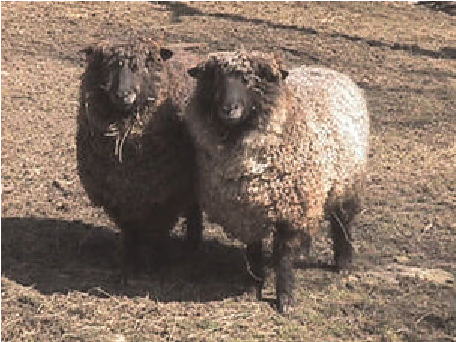October is a transition month as we welcome Autumn. Cooler temperatures and shorter days typically slow the grass growth. However, this year given that we have finally gotten some rain the grass is putting on a real growth spurt. Hopefully this will allow us to get another cutting of hay although shorter days and heavy morning dews make it harder to get the hay to dry.
The cooler temperatures also provide relief to the animals – you are much more apt to see sheep out grazing during the day and lambs jumping around than when they are hiding in the shade. The recent resurgence in grass growth means the ponies are back to wearing their muzzles. The rich grass is very high in sugars which can cause laminitis. This is a very serious inflammation in the hooves of horses so we try to restrict how much grass they are getting.
The ram lambs have been separated from the ewe lambs so we don’t have unplanned breedings. This is also the start of breeding season for many animals – including the deer (be extra careful driving) and our sheep. We will move the ewes to be bred into the pasture near the rams about the middle of the month. This helps to get them all cycling together and prepped for breeding. At the same time the ewe lambs will be moved out back. While many shepherds will breed their ewe lambs we do not. Leicester Longwool sheep (our breed) tend to mature a bit later than some other breeds and we prefer to wait until they are a year old to breed. We generally put the ram in with the ewes on Halloween which gives us lambs around early April.
We will be harvesting the unique Monocacy hop in early October. Unfortunately the hop yard at the Univ. of MD research center in Keedysville got blown down during a thunderstorm so there won’t be hops from there. We will be using some of ours in upcoming brews. Watch for FB updates on these projects and for the upcoming beer releases using this hop.

